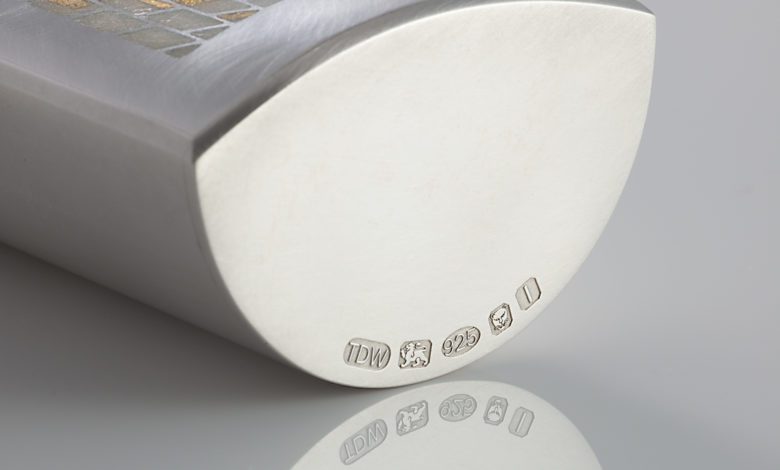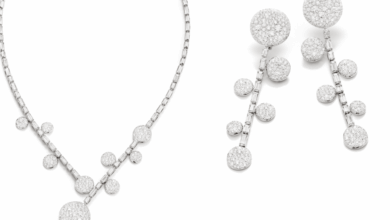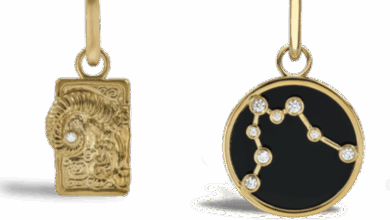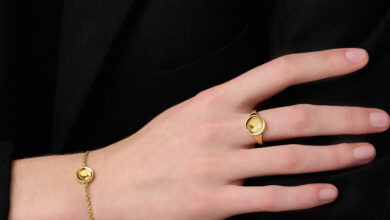Getting the Most from your Hallmark
If you are making or selling items in precious metal, hallmarking is a legal requirement, but do you know what you can do with it or how you can use it to enhance your work? Dr. Robert Organ, deputy warden of the Goldsmiths’ Company Assay Office, provides some hints and tips on making an obligation work to your benefit.

Register to get 1 free article
Reveal the article below by registering for our email newsletter.
Want unlimited access? View Plans
Already have an account? Sign in
While the hallmark is regarded as the oldest form of consumer protection, it can also be used creatively as a marketing tool. Not only does it provide provenance, but it can also be used as a mechanism to commemorate special occasions or events; yet many people still don not understand its significance.
So do we take it too much for granted? Certainly, many of our customers appear to submit their articles for hallmarking without considering the many options available to them for its application. To some, the hallmark is just the law and its application, purely a duty, but it does not have to be so. The hallmark is a thing of beauty – intricate and detailed, expertly applied – and it can enhance the appearance, as well as add value to a piece.
HOW TO USE THE HALLMARK
The standard hallmark formation is a horizontal mark with minimal spacing between each hallmarking component. Many customers – particularly those submitting jewellery – leave it to our discretion as to where to apply the hallmark and there are default positions for placement.
When it comes to silverware, it is more common for the desired position of the hallmark to be indicated on the piece and many silversmiths request display marks. A larger mark is quite standard on bigger pieces, but the hallmark is increasingly being used as a design motif, an accent or a focal point and the display, or ‘feature’ mark is the perfect way to achieve this effect.
In fact, it is possible to specify the size, location and configuration of the hallmark components on any article submitted for marking. It’s the perfect opportunity to make the mark more personal, to create something that is in harmony with a piece by incorporating it into the design. The hallmark is a unique signature and stamp of authenticity. Its power is in the guarantee of fineness – it provides a talking point and gives customers confidence in the work. So, as long as it can be applied in the chosen location and it complies with the law, it is a fantastic way to add value to a business.
GETTING CREATIVE WITH THE HALLMARK
An article can only have one full hallmark, and there are compulsory components that must be applied (see box 2), but it can have multiple part marks if it is made from more than one precious metal (see box 3).
Whilst the standard configuration of a hallmark is a straight line, it is possible to apply it in a pattern, on a curve or as a ‘feature’. There is a range of traditional display patterns (see image 1), as well as some common options for ‘feature marks’, many of which are dictated by the design of the article. It is worth noting that hallmarks above 1mm on jewellery and above 2mm on silverware are generally classified as ‘Display Marks’.
We do receive requests for unusual, more creative application of the hallmark and it is particularly encouraging to see articles where its placement is intrinsic to the design of the piece. It can be quite a challenge to incorporate the hallmark into a design, whilst still observing legal requirements, but as we saw from entries to this year’s Make Your Mark Awards, which actively encourage the creative use of the hallmark, when it is successful, it can have a hugely positive impact on a piece.
Default positions for the hallmark
Earring – wire post
Wedding ring without a solder seam – inside the shank
Dress ring/stone set ring – hallmarked with sponsor’s mark at one side, and the other four hallmarks opposite to allow for sizing
Pendants – on the bail
Bangle without a solder seam – inside
Chain or bracelets – catch end/marking plate
Chokers – catch end
Cufflinks – stirrup bar
Brooches – head of the brooch (not the pin)
Watches – on the back of the watch case
The Hallmark
The Full Traditional Hallmark comprises five marks:
Sponsor’s mark
Traditional fineness mark
Millesimal fineness mark
Assay Office mark
Date letter mark.
This is the standard mark we apply, although customers can opt for the UK Compulsory Mark instead, which is just three component marks – the Sponsor’s mark, Millesimal fineness mark and Assay Office mark.
Hallmarking mixed metal items
Precious metals are ranked as follows, starting with the least precious:
Silver
Gold
When an article comprises of two or more precious metals, the hallmark of the least precious metal is applied. Wherever possible, providing the different metals are distinguishable by colour, a ‘part mark’ – the fineness mark of the more precious metal – is applied to that component of the article.
There are exceptions to this rule – for example when a platinum article has small component parts consisting of 18ct gold, then the article may be hallmarked with a platinum full mark and the appropriate gold fineness mark. However, this will not apply if the gold components are 9ct or 14ct.
When base metal is incorporated as part of a piece, a ‘+METAL’ mark is applied with the standard hallmark to distinguish base metal from precious metal parts. This has to be applied by law, even if it isn’t requested.
Being creative with the hallmark requires a certain level of knowledge and understanding about what is possible and what is legal. Some of the most common questions we are asked are listed below – if you know the answers to these, you’ll be able harness the power of the hallmark to sell your work.
Do I have to get everything I make in precious metal hallmarked?
If you are making or selling precious metal items, hallmarking is a legal requirement. However, there are certain weight exemptions. Items below 1.0g of gold or palladium, below 7.78g for silver and below 0.5g for platinum are exempt.
If your items are made from a mix of metals that includes precious metals, these minimum requirements still apply; so even if your article is mainly brass or copper for example, if there is a precious metal element that is above the minimum weight, you will still need to send your article in for hallmarking.
What will happen if I don’t get my work hallmarked?
It is against the law in the course of a trade or business to sell or describe precious metal articles in the UK that are un-hallmarked and above the weight exemptions. In a retail setting, where you are selling to the public, you are also required to display a ‘Dealer’s Notice’ explaining the hallmark for the benefit of your customers. Failure to comply can result in fines, seizures and even, imprisonment.
What happens if I submit work and it fails?
We are required to comply with UK and EU legislation if articles fail. Although this does include a right to destroy items, in practice we rarely do this – we always try to work with our customers to find a mutually agreeable solution. With the variety of different finenesses available we can usually hallmark items at a lower standard. If we cannot do this, or if an article fails due to non-conforming parts (such as base metal findings), we contact our customers before proceeding.
Do I have to send in findings, jump rings and chains etc. with my packet?
Yes, when you submit articles for hallmarking, you should submit all related precious metal elements for the piece – our samplers have to be able to test every element in order to pass it for marking.
Is a chain and its pendant one article or two?
A pendant and chain where the pendant is fixed to the chain (either soldered or not able to be removed from either end of the chain) is only allowed one hallmark as it is deemed to be one article. A pendant and chain where the pendant can easily be removed from the chain can have a hallmark on the pendant and the chain as they are deemed to be two separate articles.
Are earrings and cufflinks classed as one article or two?
Earrings and cufflinks are marked as individual articles. Therefore one pair of earrings or cufflinks is two articles.
Can I submit articles that have been plated or enamelled?
These days, most articles, particularly fragile ones, are tested with low-level, non-destructive x-ray machines (XRF), rather than with the traditional touchstone technique of the scratching, or removal of a sample.
Articles can be submitted prior to enamelling or plating – providing the hallmark remains visible afterwards. Items that are heavily plated or enamelled can affect the reading. When this happens, a sample has to be taken to check the fineness.
While only a small quantity of material is removed and great care is taken to prevent noticeable evidence of this, there is a risk that the area sampled is apparent. If you are enamelling or plating, you can send us some additional metal to test or send the work unfinished, or with casting sprues still in place.







